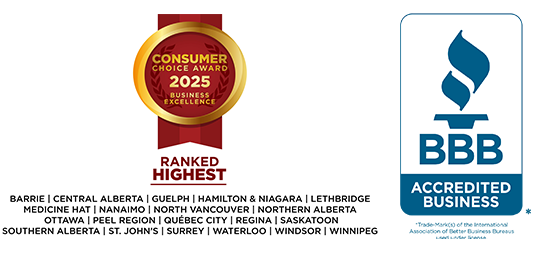REGINA, SK – October 6, 2025 – The financial vulnerability of Saskatchewan and Manitoba residents is intensifying as their financial cushions shrink and more households edge closer to insolvency. According to the latest MNP Consumer Debt Index, the average amount Saskatchewan and Manitoba residents have left over after monthly expenses has fallen to $750 from $1,006 – the largest decline among all provinces this quarter. At the same time, more than two in five (43%) Saskatchewan and Manitoba residents report they are within $200 of being unable to pay their bills each month, climbing a significant 10 points since last quarter.
“When there’s only a small amount left after paying the bills, it doesn’t take much to throw a household off balance,” says Pamela Meger, a Licensed Insolvency Trustee with MNP LTD in Regina. “An unexpected expense can push people to borrow in ways that quickly become unsustainable. By the time they reach out for help, the situation can feel overwhelming.”
Faced with mounting financial pressure, many indebted Saskatchewan and Manitoba residents are being forced into difficult “heat or eat” decisions — choosing between necessities such as heating their homes and putting food on the table. A quarter (26%, -1 pt YoY) say they have reduced their utility consumption, while one in five (21%, -6 pts) report eating less to save money.
“Some households here are being pushed into impossible choices between food, heating, or even medical needs,” says Meger. “That kind of pressure goes beyond budgeting — it affects health, stability, and overall peace of mind.”
Beyond heating and food, Saskatchewan and Manitoba residents are pulling back in other areas, but many of these cost-saving measures are already showing steep declines from last year. More than half (56%, -10 pts YoY) say they are grocery shopping strategically by using meal plans, bulk buying, coupons, and price matching. More than two in five are avoiding impulse purchases (45%, -3 pts), and more than a third have stopped dining out or ordering takeout (37%, -10 pts). One in five (19%) are also delaying or skipping medical, dental, or prescription care, highlighting how financial strain is affecting households’ well-being.
“The drop in these behaviours suggests that many households had already adopted these cost-cutting strategies previously, leaving them with fewer levers left to pull as financial pressures intensify – a sign of cutback fatigue setting in,” explains Meger.
A third (34%, -1 pt YoY) of Saskatchewan and Manitoba residents report having no plans to save more in the next 12 months. Yet at the same time, one in five (19%, +4 pts) say they intend to create or revise a household budget – more than any other province. A further one in ten (9%, unchanged) say they are considering relocating to more affordable housing, or even eating less (12%, +4 pts) to save money. Additionally, 13 percent (+2 pts) say they plan to reduce utility consumption over the next year — a concerning sign as households head into the winter months.
Concerns about AI and job security add new layer of financial strain
As households run out of ways to cut back, concerns about the impact of artificial intelligence (AI) on employment are adding to the strain. More than a third (37%) of Saskatchewan and Manitoba residents worry that AI could negatively affect their job or income. Just over 40 percent report having less than six months of emergency savings, highlighting just how exposed many households would be if their income were reduced or lost.
“AI is adding a new dimension of financial uncertainty in Saskatchewan,” says Meger. “When people are already stretched and lack strong safety nets, the thought that their jobs could be at risk only deepens that sense of instability.”
Debt outlook shows signs of recovery, but optimism remains limited
Nearly half (49%, +15 pts) of Saskatchewan and Manitoba residents now rate their debt situation as “excellent,” – a significant improvement since last quarter. At the same time, 14 percent (-7 pts) describe their situation as “terrible.” Although the Bank of Canada held interest rates at 2.75 percent during the survey period and cut to 2.5 percent shortly after, three in five (62%, -3 pts) Saskatchewan and Manitoba residents said they desperately need rates to go down, and nearly two in five (38%, -12 pts) remain concerned about their ability to repay debt even if rates decline. Fewer (29%, -17 pts) are worried that rising rates in the future could push them toward Bankruptcy, but expectations for the future are still subdued. Fewer this quarter (31%, -3 pts) expect their debt situation to improve in the next year, and just a third (37%, +1 pt) expect improvement over the next five years.
“For those already carrying significant debt, lower interest rates may provide temporary relief, but they don’t erase the underlying problem,” explains Meger. “That’s where Licensed Insolvency Trustees can make a real difference — by addressing the debt itself and laying out clear, practical options. Getting advice early can help ease the pressure and put households on a steadier path forward.”
Licensed Insolvency Trustees provide free, confidential consultations and are the only federally regulated debt professionals authorized to administer consumer proposals and bankruptcies. With more than 200 offices across the country, MNP LTD’s team of Licensed Insolvency Trustees deliver local, personalized and non-judgmental guidance to help Canadians understand their options and take the first step toward lasting financial stability.
About MNP LTD
MNP LTD, a division of the national accounting firm MNP LLP, is the largest insolvency practice in Canada. For more than 50 years, our experienced team of Licensed Insolvency Trustees and advisors have been working with individuals to help them recover from times of financial distress and regain control of their finances. With more than 240 offices from coast-to-coast, MNP helps thousands of Canadians each year who are struggling with an overwhelming amount of debt. Visit MNPdebt.ca to contact a Licensed Insolvency Trustee or use our free Do-it-Yourself (DIY) debt assessment tools. For regular, bite-sized insights about debt and personal finances, subscribe to the MNP 3-Minute Debt Break Podcast.
About the MNP Consumer Debt Index
The MNP Consumer Debt Index measures Canadians’ attitudes toward their consumer debt and gauges their ability to pay their bills, endure unexpected expenses, and absorb interest-rate fluctuations without approaching insolvency. Conducted by Ipsos and updated quarterly, the Index is an industry-leading barometer of financial pressure or relief among Canadians.
Now in its thirty-fourth wave, the Index has fallen by two points from last quarter to 86 points. Visit MNPdebt.ca/CDI to learn more.
The data was compiled by Ipsos on behalf of MNP LTD between September 4 and September 9, 2025. For this survey, a sample of 2,001 Canadians aged 18 years and over was interviewed. Weighting was then employed to balance demographics to ensure that the sample's composition reflects that of the adult population according to Census data and to provide results intended to approximate the sample universe. The precision of Ipsos online polls is measured using a credibility interval. In this case, the poll is accurate to within ±2.5 percentage points, 19 times out of 20, had all Canadian adults been polled. The credibility interval will be wider among subsets of the population. All sample surveys and polls may be subject to other sources of error, including, but not limited to, coverage error and measurement error.



